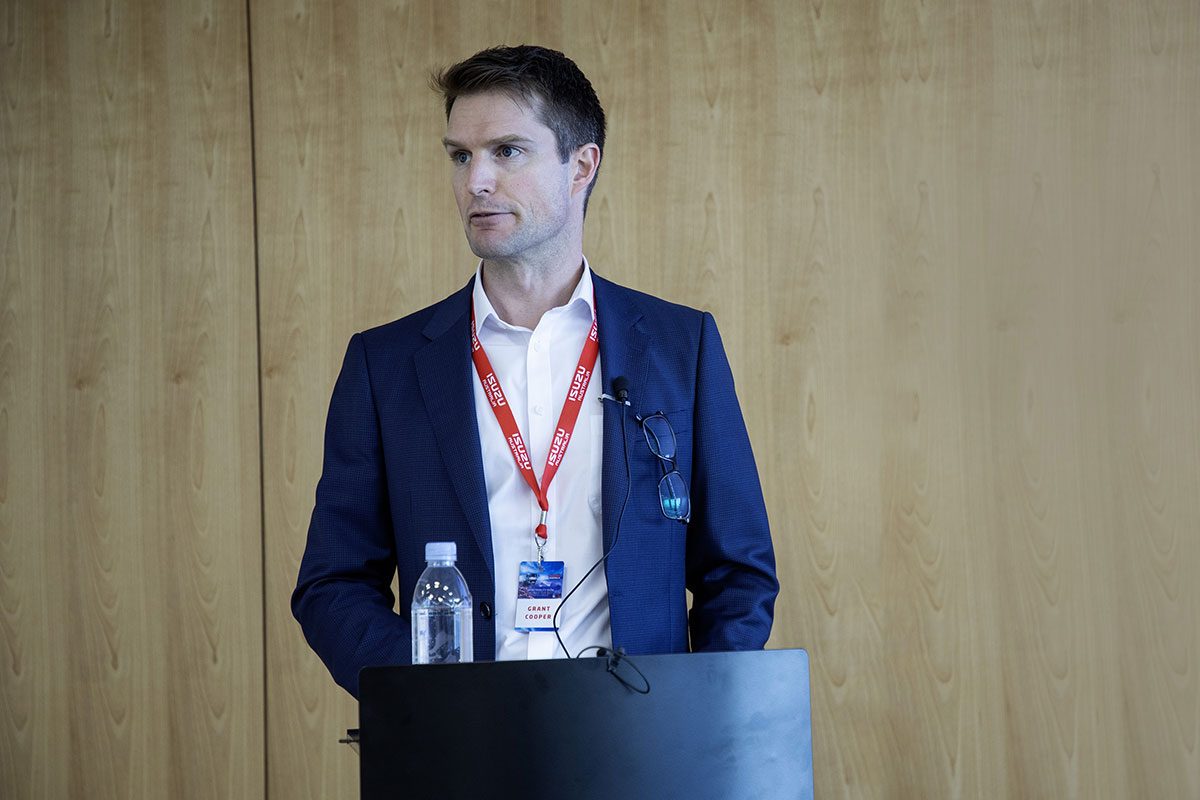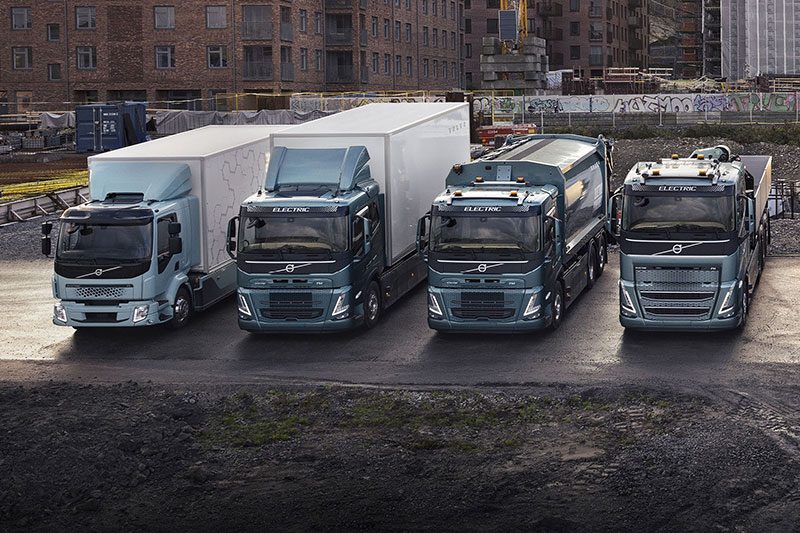One giant leap for mankind
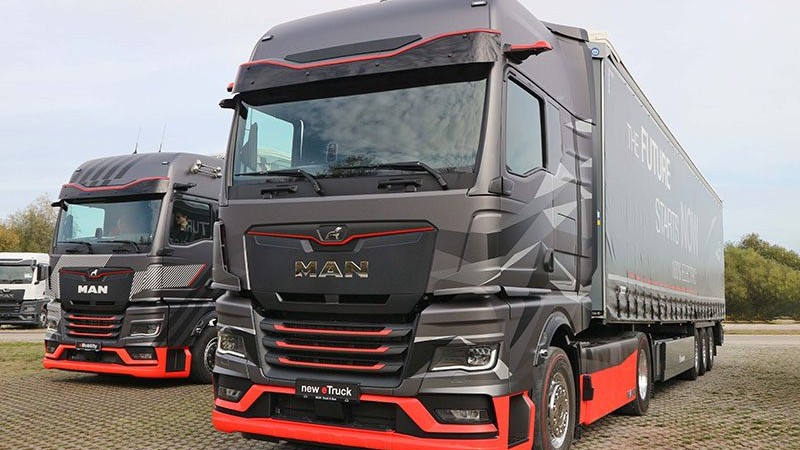
Back in 2018, I referred to Fuso’s eCanter as ‘Thor’s little hammer’. In October this year I was in Munich for a first drive of MAN’s eTruck. I may have just encountered his big hammer!
I’ve always said, ‘nothing will take you further in life than trucks’, but sometimes you do have to pinch yourself all the same. I had no idea at age eight that waving to trucks passing the farm gate and following their pied piper call would one day lead me to places like Munich, Germany. Yet here I was on an autumnal Bavarian day at MAN’s Munich test facility, poised on the go line in the driver’s seat of the company’s near-production prototype eTruck 4×2 tractor and three-axle semi.
“It is loaded isn’t it?” I said, utilising one of modern education’s more comforting tenets, that being there are no dumb questions.
“Yes, 42-tonne GCM,” replied Alexander Stöckel, one of two chaperones on my drive of the eTruck. He was with his colleague, Hermann Mair, both from MAN Truck Engineering.
They were jovial chaps, and there was certainly a sense of excitement among the wider MAN crew gathered. At last they had the chance to let customers and media loose on all their hard work to see what they thought.
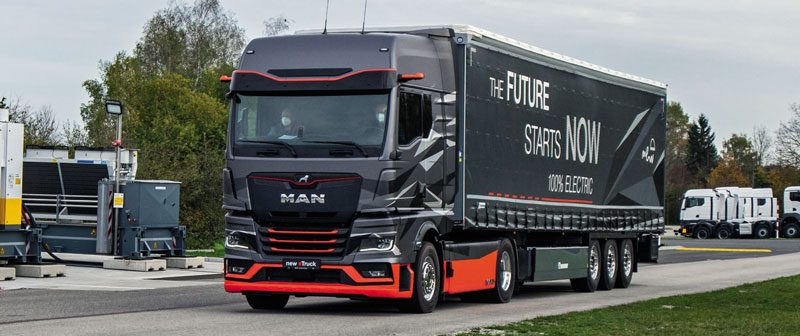
“Put your boot down.” With no further encouragement needed, I enacted Herman’s sage advice to the absolute letter.
“This is not how the production version will go is it? It’ll be slightly tamer?” I asked, wondering if I was pushing the limits of the dumb question thing.
“Yes, yes,” replied Herman with a grin. “This is how the series production truck will run. This is a near-production prototype so there’s not much left to do. The power train is done, there is only some finessing of the in-cab environment and minor undercarriage tuning.”
My mind was instantly back in Kawasaki, Japan, four years ago, remembering how my view of the e-world changed when I buried the boot in the Fuso eCanter. History was repeating, this time with five axles and 42-tonne GCM. “Bloody Nora!” I said – which required some momentary intercontinental interpretation.
What I wrote four years ago was coming to fruition all around me. I said that young drivers of the future won’t necessarily see promotion from last-mile and regional BEV/FCEVs to a linehaul diesel vehicle as a promotion. They’ll be going from clean and quiet with blistering performance to slow and noisy, and refuelled via a grubby invasive liquid. I said then that OEMs were going to have to get their linehaul acts together, and quickly.
All of Europe’s big seven (MAN, Scania, Mercedes- Benz, Volvo, DAF, Iveco and Renault) will at some point in the next half decade drop their linehaul ‘strong silent types’ into the market, and here was MAN’s first heavy hitter.
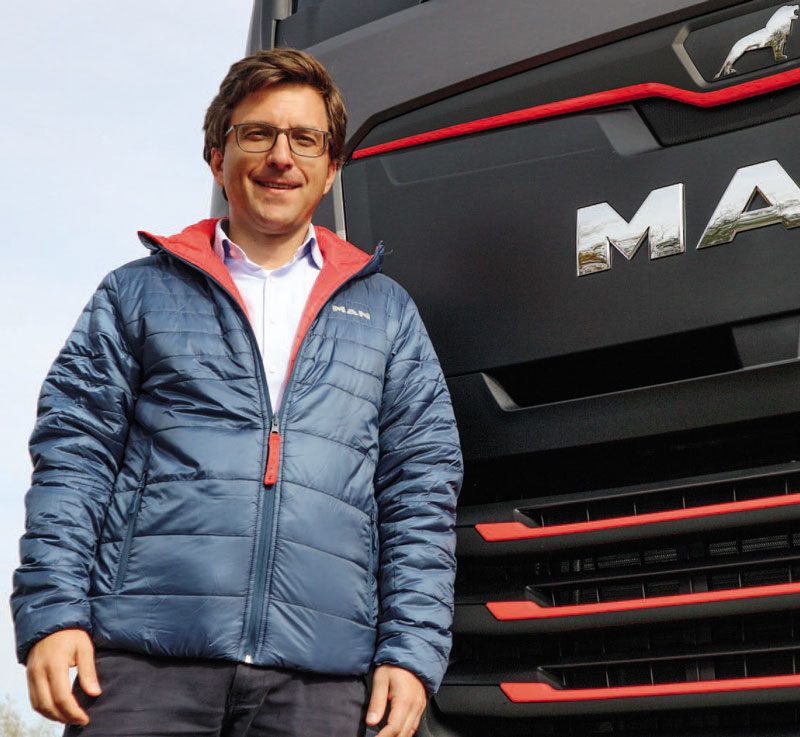
The eTruck produces 300–350kW and 3000Nm of torque. Any comparative imperial conversion in the output stats of the alternative powertrains is senseless, such is the change in how output is delivered over an ICE. “You can put your foot down harder,” says Herman.
“Oh right, okay.” Once you’re over the excitement of your host’s offer, and drive the eTruck in a manner befitting someone who is paying the bills and looking to eke out every inch of useable range, you find the delivery of power is still incredibly smooth and impressive. A whisper-quiet, relentless pursuit of forward motion.
Of course, the performance is due to the absence of performance bands. A completely flat torque curve from the get-go results in an entirely different creature. This unit would give a lethargic ute driver a wake-up call off the line.
“Watch when you pull on the retarder to stage two,” said Alexander. “You will really feel it.”
Germans are prone to understatement. Single-pedal driving is a reality in this machine, even at 42 tonnes.
There were two eTruck tractors and a couple of buses available on the day, as well as a BEV TGM 6×2 rear steer from the company’s 2018 metro/ regional range. The TGM was there to demonstrate clear progression in the BEV product development.
One of the eTrucks was set up in normal chassis height configuration, and the other low. The latter certainly looked cool and handled like it was on rails. It was fabulous to drive.

Both units had the four-speed transmission option (there’s a two speed available also depending on application), and ran a hypoid differential rather than an eAxle.
“We will have an eAxle in later models,” said Herman. “There is a lot to consider. They are a heavy item and that has implications for balance and rear suspension set up in terms of dynamics and accommodating that mass so far back.”
We were asked to limit the exposure of the interior in our reporting as this is one area that’s still being completed. What you see is not necessarily what you’ll get.
“Approximately 1400 engineers in Munich and Nuremberg worked on the eTruck,” said Jens Hartmann, VP eTruck. “More if you consider production, purchase, sales etc.” It is another stark example of the level of investment the global OEM giants are pouring into research and development.
In the case of MAN, the task is extra daunting, such is the reach of applications their products have. The eTruck is timed for series production in 2024, to be built on the same line in Munich as the ICE trucks. “Every 8.5 minutes, either an eTruck or an ICE truck will roll off the line,” says Achim Demattio, project manager sales – eTruck. “Once we start we will be providing a complete range, both tractor and rigid, in 4×2, 6×2 configuration. Obviously not all applications require maximum range. The rigid chassis options can accommodate three to six battery modules and the tractors four to six battery modules. MAN has been working with body builders for some time on chassis presentation and set-ups for ancillary equipment, things like fridge motors etc.”
Obviously, the more batteries the less the payload. However, there’s already a European concession to 42-tonnes GCM to allow the magic 25-tonne payload.
The deeper we get into the e-mobility story the more complex the issue of range becomes, complex in terms of understanding its relevance as a one-off OEM statistic. At the moment an immature marketplace is placing a high level of importance on it and OEMs sense the need to respond. The true journey here will be one of market education against a frustrating backdrop of lagging legislators and regulators around the world.
As charging infrastructures mature and eTrailers form a symbiosis with the truck in terms of propulsive effort, the range equation begins to blur.
MAN cites the range on the eTruck as being between 600 and 800km. That’s contingent on a top-up aligned to the European rest break requirement of 45 minutes and the difference between the 600 and 800 is largely down to whether you’re on a megawatt charger or CCS (combined charging system). Getting to 1000km without a trailer implicated is certainly within their sights also. The eTruck will come able to accommodate both charging systems and it is designed to take a serious dose over a short time – beyond 700kW.
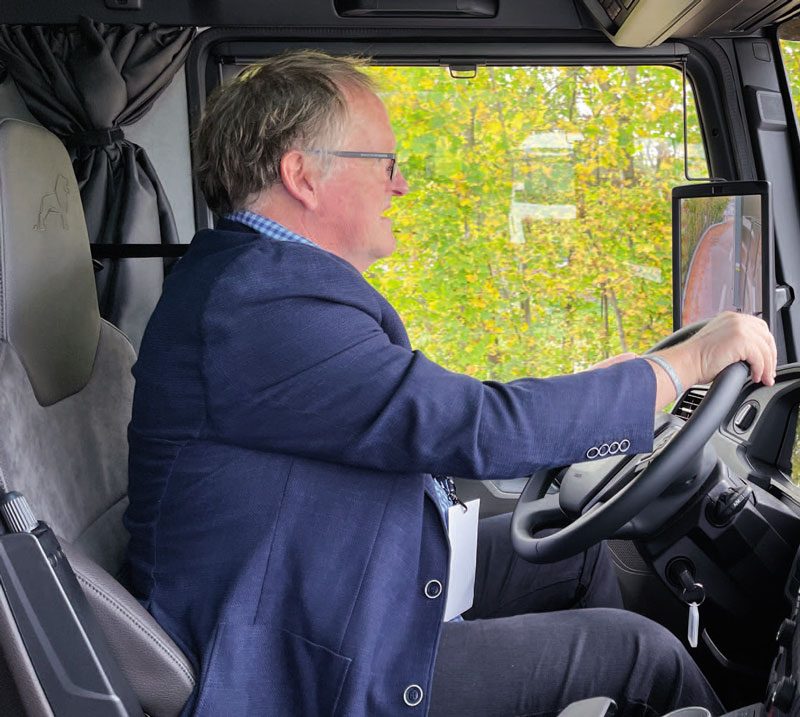
By the middle of the decade (yes, this decade) MAN says a BEV will be more economical to run than a conventional diesel and by 2030 half of their vehicles sold in the EU will be zero emissions. It also says the annual European demand for electrons by 2030 will be 37 terawatt hours (1 terawatt hour = 1 trillion watt-hours).
Key to battery life expectancy and efficiency is temperature and much of the eTruck’s high-tech support systems are about keeping the power sources at their homeostatic optimum of 10°C to 30°C. MAN’s Nuremberg battery plant will come on stream in 2025, outputting 100,000 battery modules per year with a huge emphasis on recycling and repatriation of the components with a target of 97% reusability. More on that project in the next issue.
The MAN eTruck – it’s still over a calendar year away from Europe, so we’re not likely to see one in our parts until late in the second half of the decade at the earliest. The reality is, however, with such well-defined linehaul routes, we could take the MAN eTruck and make it work now. A couple of megawatt chargers in the right locations and we’re in Christchurch from Auckland in the legal hours. No, the configuration is not optimal for the bulk of our applications, but rest assured, we’re going to have to take a long hard look at that, too.
This is not a period in history when global OEMs have the money or time to make quirky configurations for bespoke low-volume markets. Rationalisation may well be coming to global transport on a number of fronts.
Read more
Road to Zero Isuzu styles
0 Comments6 Minutes
Ready for the harvest
0 Comments12 Minutes
VGA introduces electric
0 Comments8 Minutes
Celling’ the future
0 Comments14 Minutes


